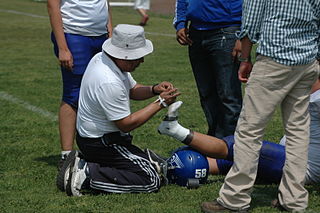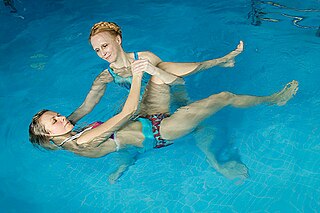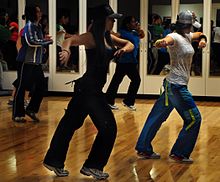An eating disorder is a mental disorder defined by abnormal eating behaviors that adversely affect a person's physical or mental health. Types of eating disorders include binge eating disorder, where the patient eats a large amount in a short period of time; anorexia nervosa, where the person has an intense fear of gaining weight and restricts food or overexercises to manage this fear; bulimia nervosa, where individuals eat a large quantity (binging) then try to rid themselves of the food (purging); pica, where the patient eats non-food items; rumination syndrome, where the patient regurgitates undigested or minimally digested food; avoidant/restrictive food intake disorder (ARFID), where people have a reduced or selective food intake due to some psychological reasons; and a group of other specified feeding or eating disorders. Anxiety disorders, depression and substance abuse are common among people with eating disorders. These disorders do not include obesity. People often experience comorbidity between an eating disorder and OCD. It is estimated 20–60% of patients with an ED have a history of OCD.

Sports injuries are injuries that occur during sport, athletic activities, or exercising. In the United States, there are approximately 30 million teenagers and children who participate in some form of organized sport. Of those, about three million athletes age 14 years and under experience a sports injury annually. According to a study performed at Stanford University, 21 percent of the injuries observed in elite college athletes caused the athlete to miss at least one day of sport, and approximately 77 percent of these injuries involved the knee, lower leg, ankle, or foot. In addition to those sport injuries, the leading cause of death related to sports injuries is traumatic head or neck occurrences.
Health has a variety of definitions, which have been used for different purposes over time. Health can be promoted by encouraging healthful activities, such as regular physical exercise and adequate sleep, and by reducing or avoiding unhealthful activities or situations, such as smoking or excessive stress. Some factors affecting health are due to individual choices, such as whether to engage in a high-risk behavior, while others are due to structural causes, such as whether the society is arranged in a way that makes it easier or harder for people to get necessary healthcare services. Still, other factors are beyond both individual and group choices, such as genetic disorders.

Physical fitness is a state of health and well-being and, more specifically, the ability to perform aspects of sports, occupations, and daily activities. Physical fitness is generally achieved through proper nutrition, moderate-vigorous physical exercise, and sufficient rest along with a formal recovery plan.

Pointe technique is part of classical ballet involving a technique that concerns pointe work, in which a ballet dancer supports all body weight on the tips of fully extended feet when wearing pointe shoes. A dancer is said to be en pointe when the body is supported in this manner, and a fully extended vertical foot is said to be en pointe when touching the floor, even when not bearing weight.

A ballet dancer is a person who practices the art of classical ballet. Both females and males can practice ballet. They rely on years of extensive training and proper technique to become a part of a professional ballet company. Ballet dancers are at a high risk of injury due to the demanding technique of ballet.

Achilles tendinitis, also known as achilles tendinopathy, occurs when the Achilles tendon, found at the back of the ankle, becomes sore. Achilles tendinopathy is accompanied by alterations in the tendon's structure and mechanical properties. The most common symptoms are pain and swelling around the affected tendon. The pain is typically worse at the start of exercise and decreases thereafter. Stiffness of the ankle may also be present. Onset is generally gradual.
Muscle dysmorphia is a subtype of the obsessive mental disorder body dysmorphic disorder, but is often also grouped with eating disorders. In muscle dysmorphia, which is sometimes called "bigorexia", "megarexia", or "reverse anorexia", the delusional or exaggerated belief is that one's own body is too small, too skinny, insufficiently muscular, or insufficiently lean, although in most cases, the individual's build is normal or even exceptionally large and muscular already.

An underweight person is a person whose body weight is considered too low to be healthy. A person who is underweight is malnourished.

Relative energy deficiency in sport (RED-S) is a syndrome in which disordered eating, amenorrhoea/oligomenorrhoea, and decreased bone mineral density are present. It is caused by eating too little food to support the amount of energy being expended by an athlete, often at the urging of a coach or other authority figure who believes that athletes are more likely to win competitions when they have an extremely lean body type. RED-S is a serious illness with lifelong health consequences and can potentially be fatal.

College health is a desired outcome created by a constellation of services, programs and policies directed at advancing the health and wellbeing of individuals enrolled in an institution of higher education, while also addressing and improving both population health and community health. Many colleges and universities worldwide apply both health promotion and health care as processes to achieve key performance indicators in college health. The variety of healthcare services provided by any one institution range from first aid stations employing a single nurse to large, accredited, multi-specialty ambulatory healthcare clinics with hundreds of employees. These services, programs and policies require a multidisciplinary team, the healthcare services alone include physicians, physician assistants, administrators, nurses, nurse practitioners, mental health professionals, health educators, athletic trainers, dietitians and nutritionists, and pharmacists. Some of the healthcare services extend to include massage therapists and other holistic health care professionals. While currently changing, the vast majority of college health services are set up as cost centers or service units rather than as parts of academic departments or health care delivery enterprises.

Equine-assisted therapy (EAT) encompasses a range of treatments that involve activities with horses and other equines to promote human physical and mental health. Modern use of horses for mental health treatment dates to the 1990s. Systematic review of studies of EAT as applied to physical health date only to about 2007, and a lack of common terminology and standardization has caused problems with meta-analysis. Due to a lack of high-quality studies assessing the efficacy of equine-assisted therapies for mental health treatment, concerns have been raised that these therapies should not replace or divert resources from other evidence-based mental health therapies. The existing body of evidence does not justify the promotion and use of equine-related treatments for mental disorders.

Anorexia nervosa (AN), often referred to simply as anorexia, is an eating disorder characterized by food restriction, body image disturbance, fear of gaining weight, and an overpowering desire to be thin.

In psychology, relaxation is the emotional state of low tension, in which there is an absence of arousal, particularly from negative sources such as anger, anxiety, or fear.
Exercise addiction is a state characterized by a compulsive engagement in any form of physical exercise, despite negative consequences. While regular exercise is generally a healthy activity, exercise addiction generally involves performing excessive amounts of exercise to the detriment of physical health, spending too much time exercising to the detriment of personal and professional life, and exercising regardless of physical injury. It may also involve a state of dependence upon regular exercise which involves the occurrence of severe withdrawal symptoms when the individual is unable to exercise. Differentiating between addictive and healthy exercise behaviors is difficult but there are key factors in determining which category a person may fall into. Exercise addiction shows a high comorbidity with eating disorders.
Health issues of athletics concern the health and well-being of athletes who participate in an organized sport. If athletes are physically and mentally underdeveloped, they are susceptible to mental or physical problems. Athletes trying to improve their performance in sports can harm themselves by overtraining, adopting eating habits that damage them physically or psychologically, and using steroids or supplements.

Barre is a form of physical exercise, usually conducted in group classes in gyms or specialty studios. It is distinguished from other group fitness activities by its use of the ballet barre and its incorporation of movements derived from ballet. These classical dance movements and positions are combined with those drawn from yoga and pilates, and other equipment is sometimes used in addition to the barre, such as resistance bands, yoga straps, exercise balls and hand weights. Barre classes typically focus on small, pulsing movements with emphasis on form, alignment and core engagement. Participants hold their bodies still while contracting specific, targeted sets of muscles in isometric exercises. Repetitions tend to be high, range-of-motion small, and weights, when used, light. Barre classes focus on the lower body and core, developing strength and flexibility from the ankles up though the calves, knees, thighs, glutes and abdominals. Holding muscles in contraction for extended periods frequently leads to them shaking as they fatigue. This is particularly true of thighs, as the quadriceps tire.

Hydrogymnastics is a water-based therapeutic exercise. As its name suggests, this form of aquatic therapy or aquatic rehabilitation is performed in water, and it can take place in swimming pools at aquatic leisure centres and/or in home pools. Being a form of aquatic therapy, hydrogymnastics aims to improve the physical and psychological health and well-being of an individual. Hydrogymnastics can be performed by anyone, including youths, middle-aged people, the elderly, athletes and those with disabilities. Hydrogymnastics is often assisted by a qualified aquatic therapist and/or exercise physiologist. Although the effects of hydrogymnastics may vary between individuals belonging to different age groups and genders, hydrogymnastics mainly improves one's cardiovascular fitness, strength, balance and mobility.

The science of yoga is the scientific basis of modern yoga as physical exercise in human sciences such as anatomy, physiology, and psychology. Yoga's effects are to some extent shared with other forms of exercise, though it differs in the amount of stretching involved, and because of its frequent use of long holds and relaxation, in its ability to reduce stress. Yoga is here treated separately from meditation, which has effects of its own, though yoga and meditation are combined in some schools of yoga.
Scuba diving therapy is a type of treatment that consists of different scuba diving techniques and exercises. Essential elements are increased body awareness, social bonding, and breathing techniques. The goal is to improve physical and psychological well-being.

















